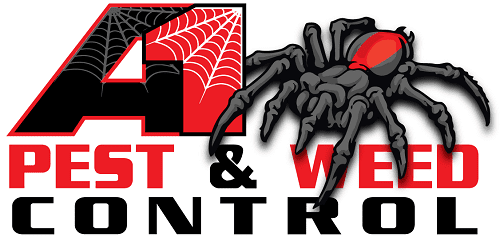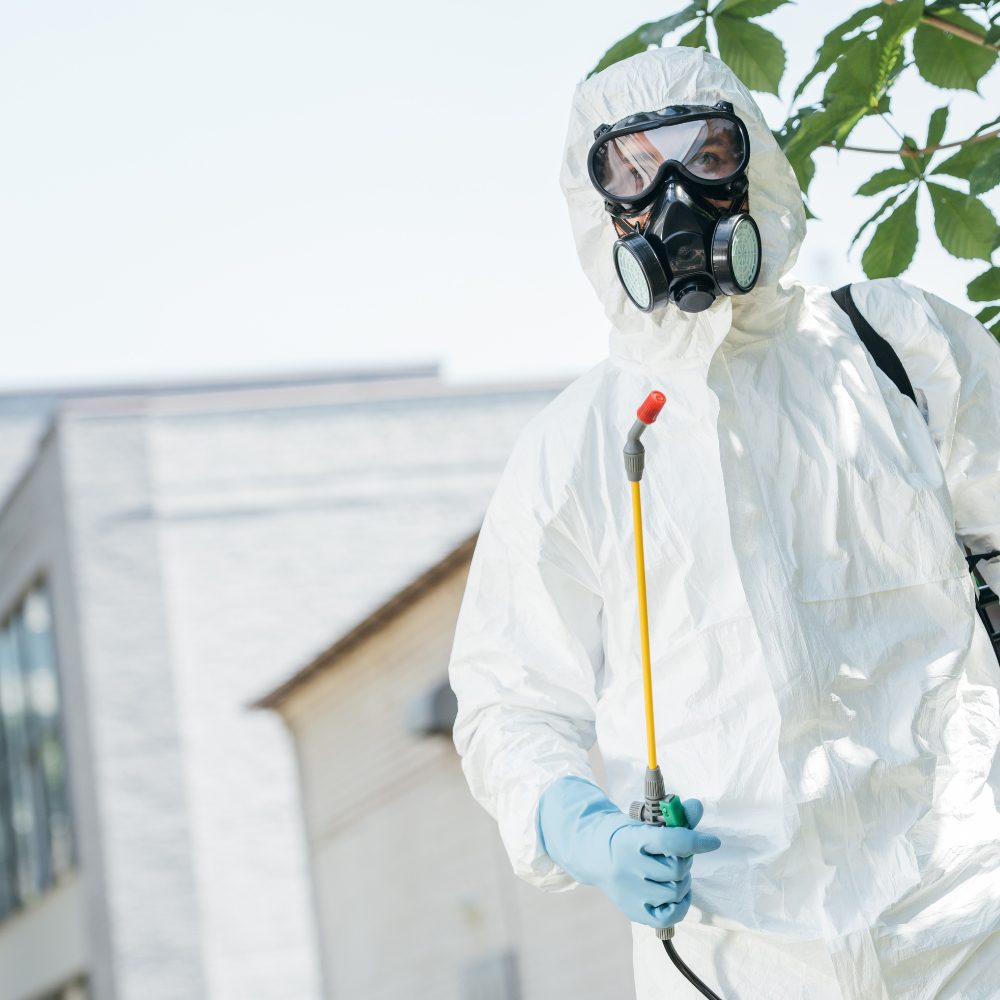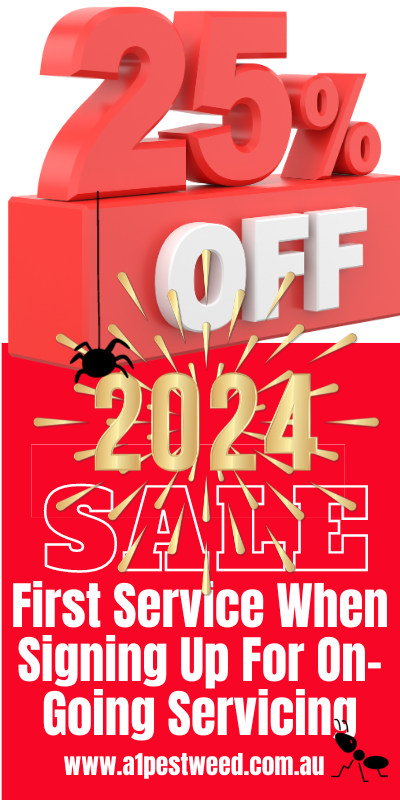Commercial Pest Removal Process: Ongoing Monitoring for Effective Pest Prevention in Melbourne
Are you looking for effective and proactive commercial pest control solutions in Melbourne?
Discover the importance of ongoing monitoring in commercial pest removal, along with valuable tips and strategies for preventing pests in your business.
Learn about integrated pest management techniques, surveillance methods, and more.
Introduction
“Prevention is the key to effective pest control in commercial settings. Ongoing monitoring allows businesses to stay proactive, identifying and addressing pest issues before they become major problems.”
A1 Pest & Weed Control
As a business owner in Melbourne, keeping your commercial space free from pests is crucial for the health and safety of your customers and employees.
While a one-time pest control treatment can provide temporary relief, it’s essential to implement ongoing monitoring and prevention strategies to maintain a pest-free environment in the long run.
In this comprehensive guide, we will explore the commercial pest removal process with a focus on ongoing monitoring.
We’ll discuss integrated pest management techniques, proactive commercial pest control solutions, effective pest surveillance methods, and commercial pest prevention strategies.
By the end, you’ll have a solid understanding of how to protect your business from pest infestations and ensure a sanitary and pest-free environment for everyone.
Key Takeaways
- Ongoing monitoring plays a crucial role in commercial pest removal, allowing businesses to stay proactive.
- Integrated pest management (IPM) combines prevention, monitoring, and targeted control methods.
- Effective pest surveillance can help identify and address pest issues in their early stages.
- Proactive commercial pest control solutions minimize the need for reactive treatments, saving time and money.
- Implementing comprehensive pest prevention strategies is essential for maintaining a pest-free commercial space.
Monitoring Techniques
Monitoring techniques are an integral part of proactive commercial pest control. By regularly inspecting and monitoring your commercial space, you can identify pest infestations at an early stage and take immediate action.
Here are some effective monitoring techniques:
- Visual Inspections: Regularly inspect your premises for signs of pest activity, such as droppings, nests, gnaw marks, or chewed wires. Pay close attention to areas where pests are likely to hide, such as storage rooms, kitchens, and entry points.
- Trapping: Utilize traps designed for specific pests to capture and monitor their activity. Traps can provide valuable insights into the presence and severity of infestations. Common types of traps include glue traps, snap traps, and pheromone traps.
- Monitoring Devices: Modern pest control technology offers various monitoring devices, such as motion-sensor cameras and insect monitoring systems. These devices provide real-time data on pest activity, allowing for prompt action.
- Pest Monitoring Stations: Install pest monitoring stations strategically throughout your commercial space. These stations attract pests and help monitor their activity levels. Regularly check these stations and take necessary steps based on the collected data.
Remember, monitoring should be an ongoing process to detect any potential pest problems promptly. By diligently observing and assessing the situation, you can safeguard your business from pest infestations.
Integrated Pest Management for Businesses
Integrated pest management (IPM) is a comprehensive approach to pest control that focuses on prevention, monitoring, and targeted treatments.
This environmentally friendly and cost-effective strategy minimizes the use of pesticides while effectively managing pests. Here’s how IPM works:
- Pest Identification: Proper identification of pests is crucial to developing a targeted control plan. By understanding the behaviour and biology of pests specific to your business, you can implement effective prevention methods.
- Prevention Strategies: IPM emphasizes preventive measures such as proper sanitation, regular maintenance, and exclusion techniques. Seal entry points, repair cracks or gaps, and keep your commercial space clean to minimize pest access and harborage areas.
- Monitoring and Thresholds: Regular monitoring allows you to establish thresholds for pest presence. Once thresholds are crossed, it’s time to take action. Monitoring also helps evaluate the effectiveness of control measures.
- Control Methods: IPM relies on a combination of different control methods, including biological controls, mechanical controls, and targeted pesticide applications. These methods are tailored to specific pests, ensuring minimal impact on the environment and non-target organisms.
Implementing an IPM program can significantly reduce the risk of pest infestations in your commercial space while ensuring the safety of your employees, customers, and the environment.
Proactive Commercial Pest Control Solutions
Proactive pest control solutions prioritize prevention and early detection to minimize the need for reactive treatments.
By adopting proactive strategies, you can save time, money, and the potential damage caused by pest infestations. Here are some proactive solutions for commercial pest control:
- Regular Inspections: Conduct routine inspections of your commercial space to identify and address any potential pest issues promptly. Consider partnering with a professional pest control company for thorough and regular inspections.
- Employee Education: Educate your employees about pest prevention techniques, such as proper food storage, waste management, and cleanliness. Encourage them to report any signs of pest activity or conducive conditions.
- Sanitation Practices: Maintain a clean and hygienic environment by regularly sanitizing surfaces, removing trash promptly, and preventing food debris accumulation. Good sanitation practices help deter pests from infesting your premises.
- Exclusion Measures: Seal any gaps, cracks, or openings that could serve as entry points for pests. Install door sweeps, weather stripping, and window screens to prevent pest ingress.
- Landscaping Considerations: Landscaping around your commercial building can impact pest activity. Keep plants trimmed and away from the building’s foundation. Address any potential water or moisture issues that may attract pests.
Remember, prevention is always better than reacting to a pest infestation. By being proactive, you can minimize the disruption to business operations and maintain a positive reputation.
Ongoing Monitoring in Commercial Pest Removal
Ongoing monitoring is a critical component of the commercial pest removal process. By continuously monitoring your premises, you can detect any signs of pest activity and respond swiftly.
Here’s why ongoing monitoring is important:
- Early Detection: Ongoing monitoring allows you to identify pest problems at their early stages, preventing minor issues from developing into full-blown infestations.
- Targeted Solutions: By monitoring the type and severity of pest activity, you can tailor control methods to address specific pests effectively. This approach reduces the amount of pesticides used and minimizes any potential risks.
- Data-Driven Decision Making: Regular monitoring provides valuable data that helps measure the effectiveness of pest control measures. By analyzing this data, you can adjust your strategies to achieve better results.
- Compliance with Regulations: Many industries have specific regulations regarding pest control and sanitation. Ongoing monitoring ensures you remain in compliance, avoiding any penalties or legal issues.
- Customer and Employee Trust: Maintaining a pest-free environment demonstrates your commitment to the well-being of your customers and employees. Regular monitoring assures them that you take pest control seriously.
To ensure effective ongoing monitoring, consider partnering with a professional commercial pest control company. They have the expertise, experience, and tools necessary to conduct thorough inspections and implement proactive pest control measures.
Effective Pest Surveillance for Businesses
Pest surveillance is a systematic and proactive approach to monitoring pest activity in your commercial space. It involves regular inspections and the use of applicable tools and techniques to gather data on potential pests. Here are effective pest surveillance methods for businesses:
- Inspection Checklist: Create a comprehensive inspection checklist specific to your industry and premises. This checklist should cover all critical areas, including storage rooms, kitchens, HVAC systems, and entry points.
- Pest Monitoring Devices: Utilize pest monitoring devices like pheromone traps, UV lights, or motion-sensor cameras to capture and monitor pest activity. These devices provide valuable insights into pests’ behavior patterns and help determine appropriate control measures.
- Documentation: Maintain detailed records of pest sightings, inspections, and control measures. This documentation helps track trends over time and evaluate the effectiveness of pest control measures.
- Pest Trend Analysis: Analyze collected data to identify pest trends, seasonal variations, or patterns in specific areas of your commercial space. Understanding these trends allows you to strengthen prevention efforts and prioritize control measures accordingly.
Regular surveillance, supported by accurate data collection and analysis, empowers you to prevent pest issues before they escalate. It enables a proactive approach to make informed decisions and stay ahead of potential infestations.
Commercial Pest Prevention and Monitoring Strategies
Effective pest prevention and monitoring strategies are essential for keeping your commercial space pest-free. Incorporate the following practices into your pest management plan:
- Regular Training and Education: Ensure your staff receives comprehensive training on proper sanitation practices, pest prevention techniques, and early detection. Encourage an open line of communication for reporting pest sightings or concerns.
- Waste Management: Maintain a strict waste management routine, including regular trash removal, securing dumpsters, and proper disposal of food waste. Implement strict guidelines for staff to follow when handling waste.
- Structural Maintenance: Regularly inspect your building’s exterior for cracks, gaps, or damaged areas that could serve as entry points for pests. Seal these openings promptly to prevent pests from gaining access to your premises.
- Proper Food Storage: Store all food and ingredients in sealable containers to prevent pests from contaminating supplies. Implement a “first in, first out” system to ensure older products are used first.
- Cleaning and Hygiene: Implement a rigorous cleaning schedule, focusing on areas prone to pest activity. Pay attention to floors, walls, countertops, drains, and other potential breeding grounds.
- Professional Pest Control Services: Partnering with a reputable commercial pest control company, such as A1 Pest & Weed Control, offers the expertise and resources needed for ongoing pest monitoring, prevention, and effective control measures.
A combination of these strategies will help you establish a robust pest prevention program, reducing the likelihood of costly infestations and potential damage to your business’s reputation.
FAQ
Q: How often should I conduct ongoing pest monitoring in my commercial space?
A: Regular monitoring should be performed at least monthly, but it may need to be more frequent based on the nature of your business and specific pest risks.
Q: Can I conduct ongoing pest monitoring myself, or should I hire a professional?
A: While you can perform basic inspections, partnering with a professional commercial pest control company ensures thorough and accurate monitoring. Professionals have the knowledge, experience, and tools required for effective pest surveillance.
Q: What are the most common pests in commercial spaces?
A: The most common pests encountered in commercial spaces include rodents (rats and mice), cockroaches, ants, flies, and stored product pests like beetles and moths.
Q: How can I prevent pests from entering my commercial space?
A: Prevent pests from entering your commercial space by sealing all potential entry points, implementing proper sanitation practices, and conducting regular inspections. Additionally, educate your employees about pest prevention techniques.
Advice & Actionable Tips
- Implement an Integrated Pest Management (IPM) program to address pest issues holistically.
- Create a custom inspection checklist for your business to ensure thorough monitoring.
- Train your employees on pest prevention techniques and encourage reporting.
- Regularly maintain the exterior of your building to prevent pest entry points.
- Seal any cracks, gaps, or openings that pests may use to access your premises.
- Partner with a professional commercial pest control company for ongoing pest prevention and monitoring.
- Regularly clean and sanitize your commercial space, paying attention to potential pest hotspots.
- Implement pest monitoring devices and traps to gather data on pest activity.
- Document all pest sightings, inspections, and control measures for analysis and future reference.
- Stay updated on local regulations and compliance requirements regarding pest control in your industry.
By following these tips and incorporating ongoing monitoring into your pest control efforts, you can significantly reduce the risk of pest infestations in your commercial space.
Conclusion
Maintaining a pest-free commercial space is crucial for the health, safety, and reputation of your business.
Ongoing monitoring plays a vital role in commercial pest removal, allowing you to detect and address pest issues before they become major problems.
By implementing integrated pest management techniques, proactive solutions, and effective surveillance methods, you can stay ahead of pests and ensure a hygienic environment for everyone.
Remember, preventive measures combined with ongoing monitoring are key to long-term pest control success.
If you need professional commercial pest control services in Melbourne, contact A1 Pest & Weed Control today.
With their expertise and commitment to customer satisfaction, they will help you keep your commercial space pest-free and thriving.
Article Sources & Further Reading
- Link 2: “Importance of Ongoing Pest Monitoring in a Commercial Setting” – URL: https://www.pests.org/importance-of-ongoing-pest-monitoring/




